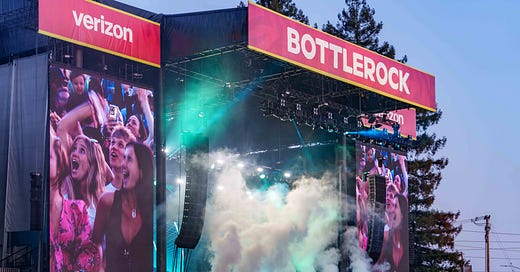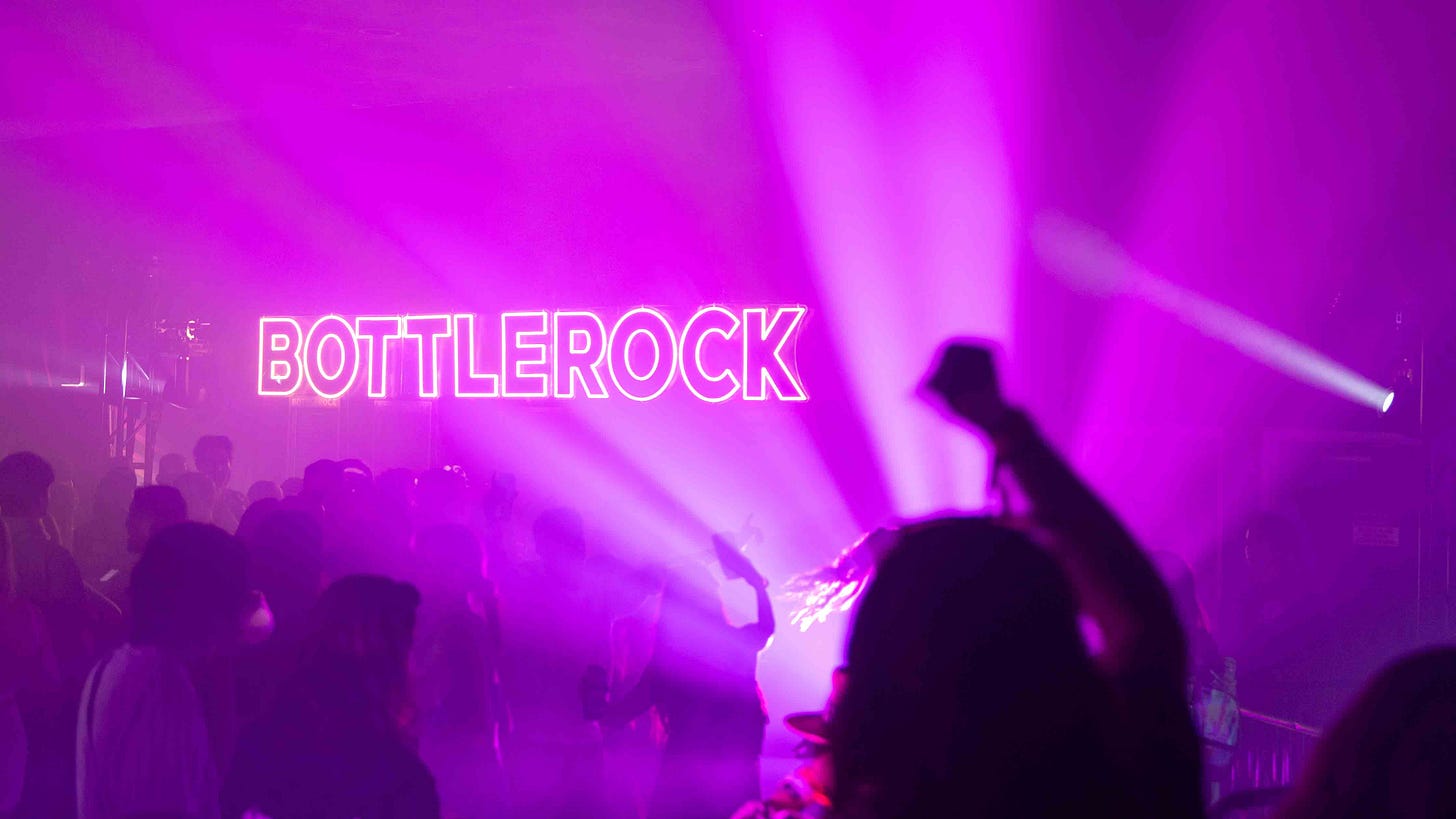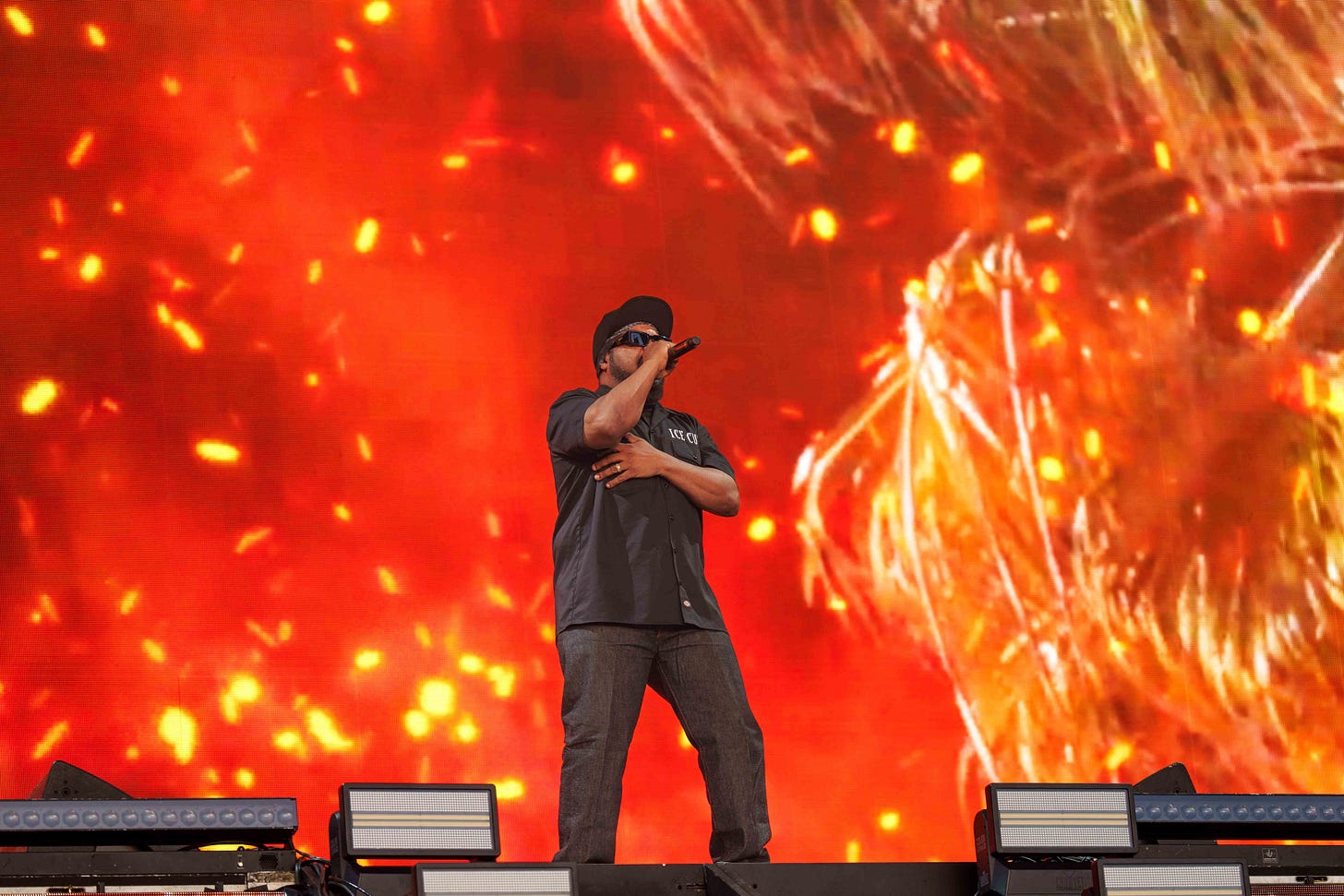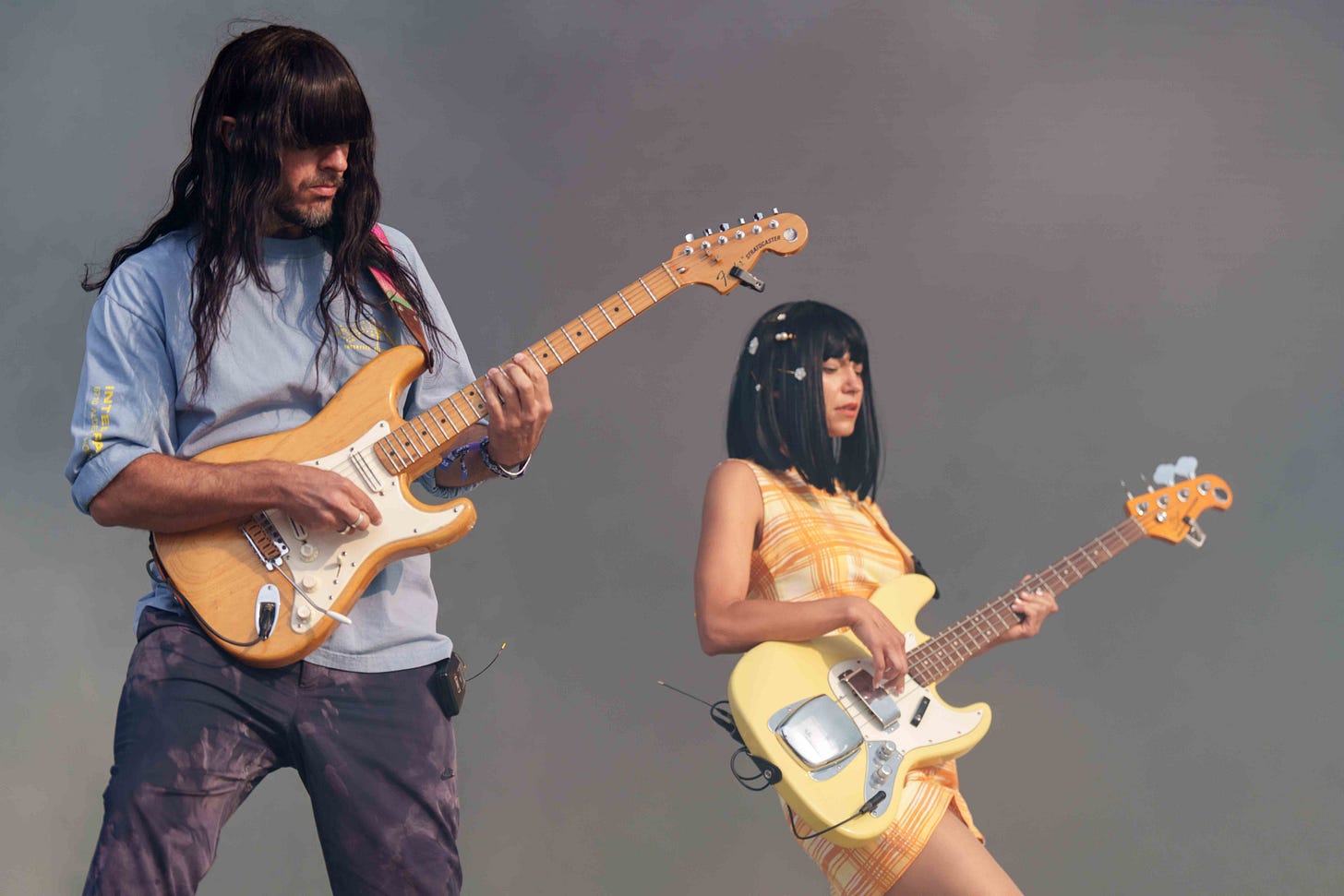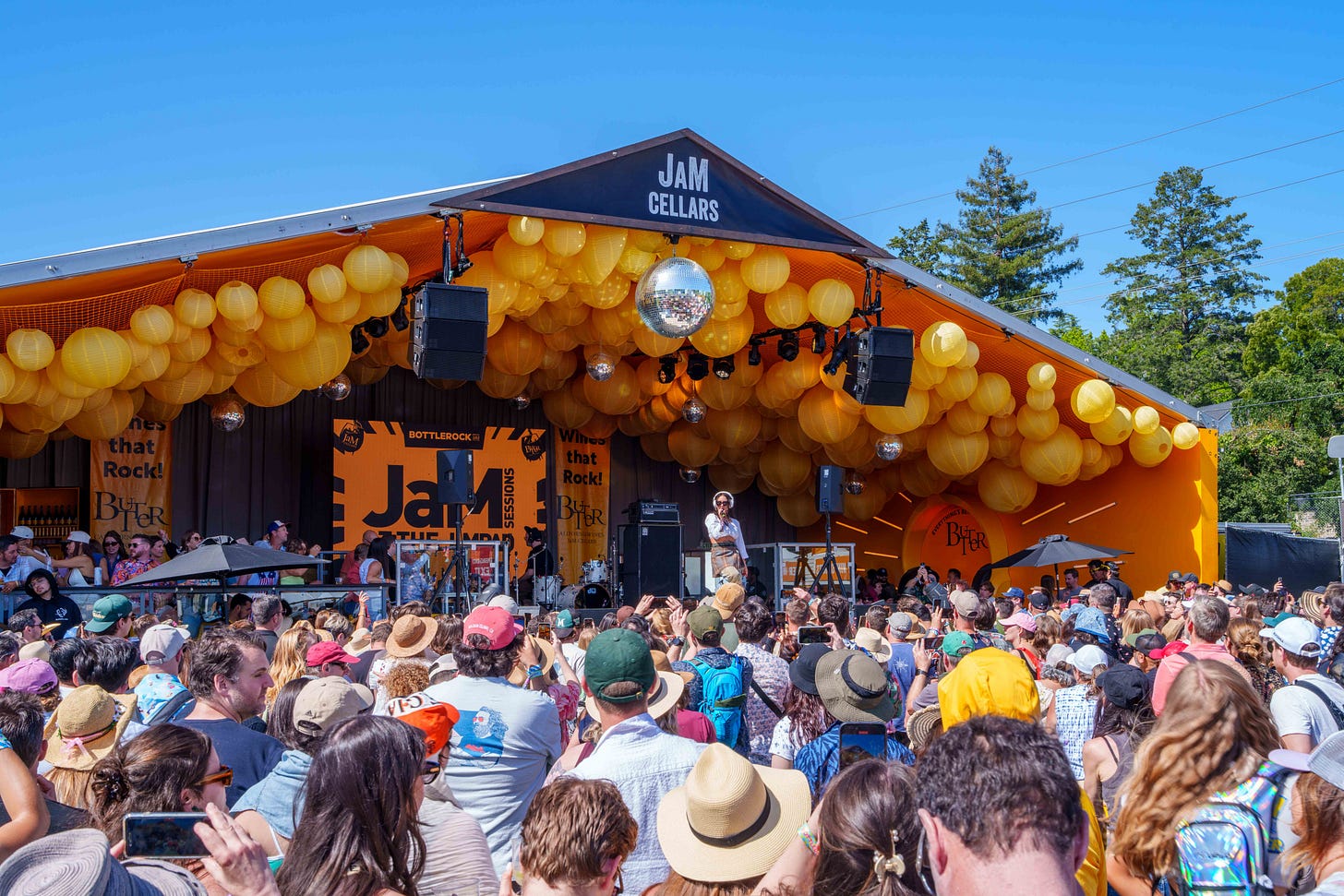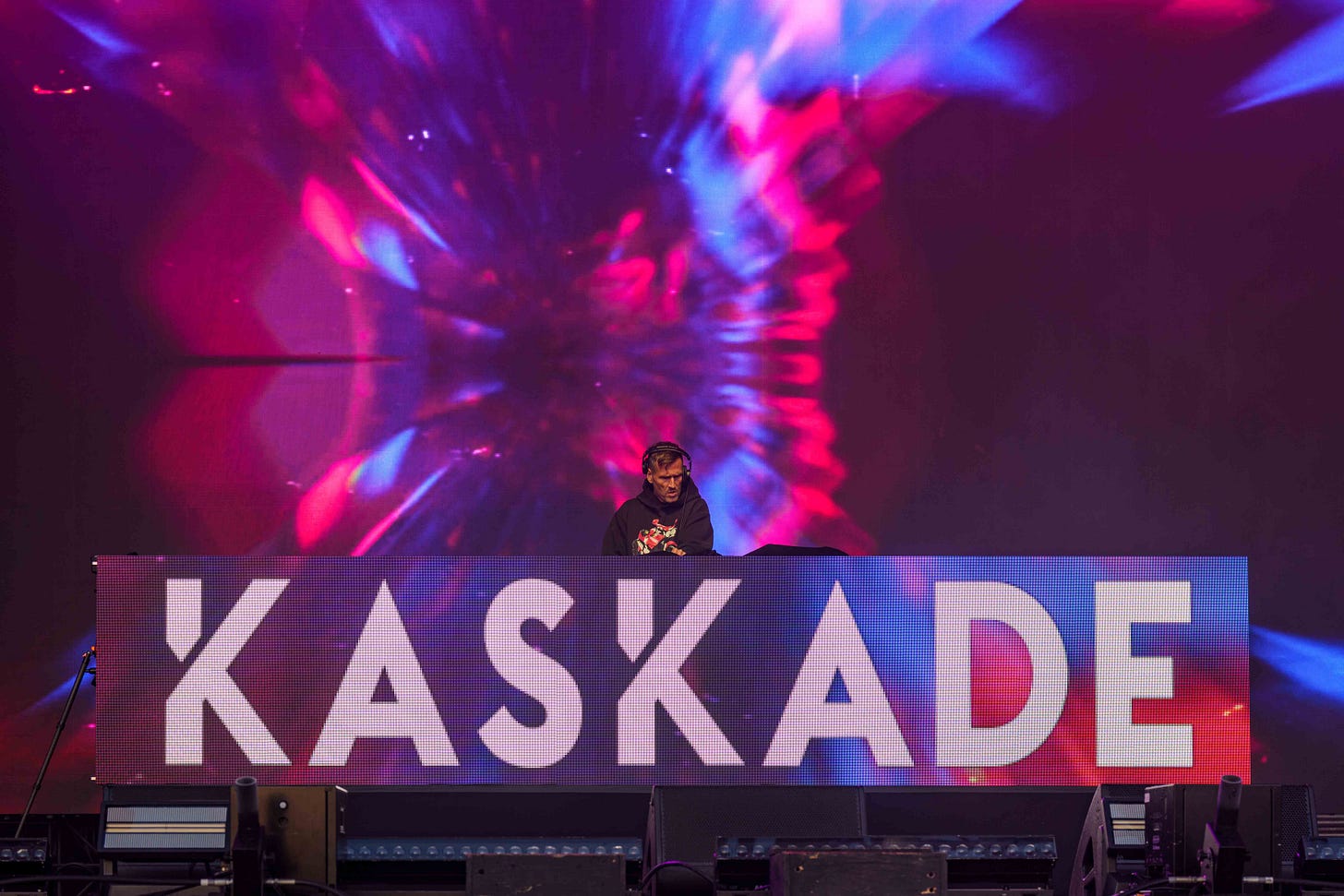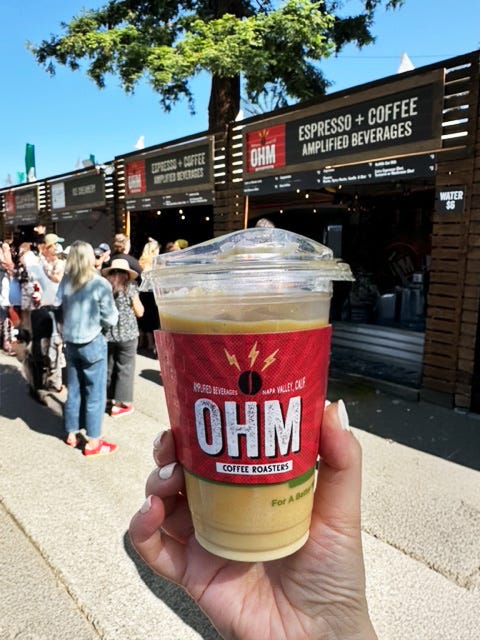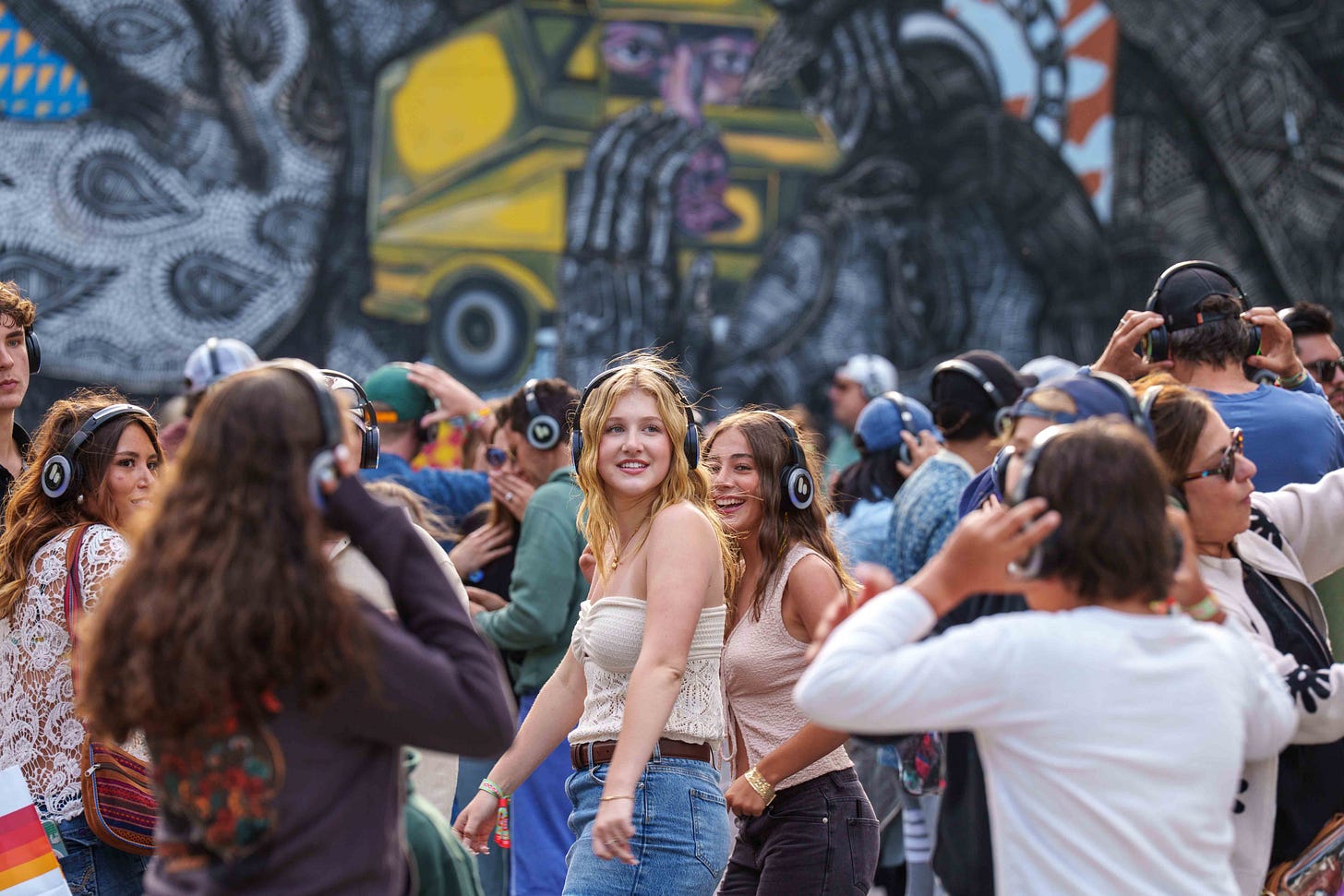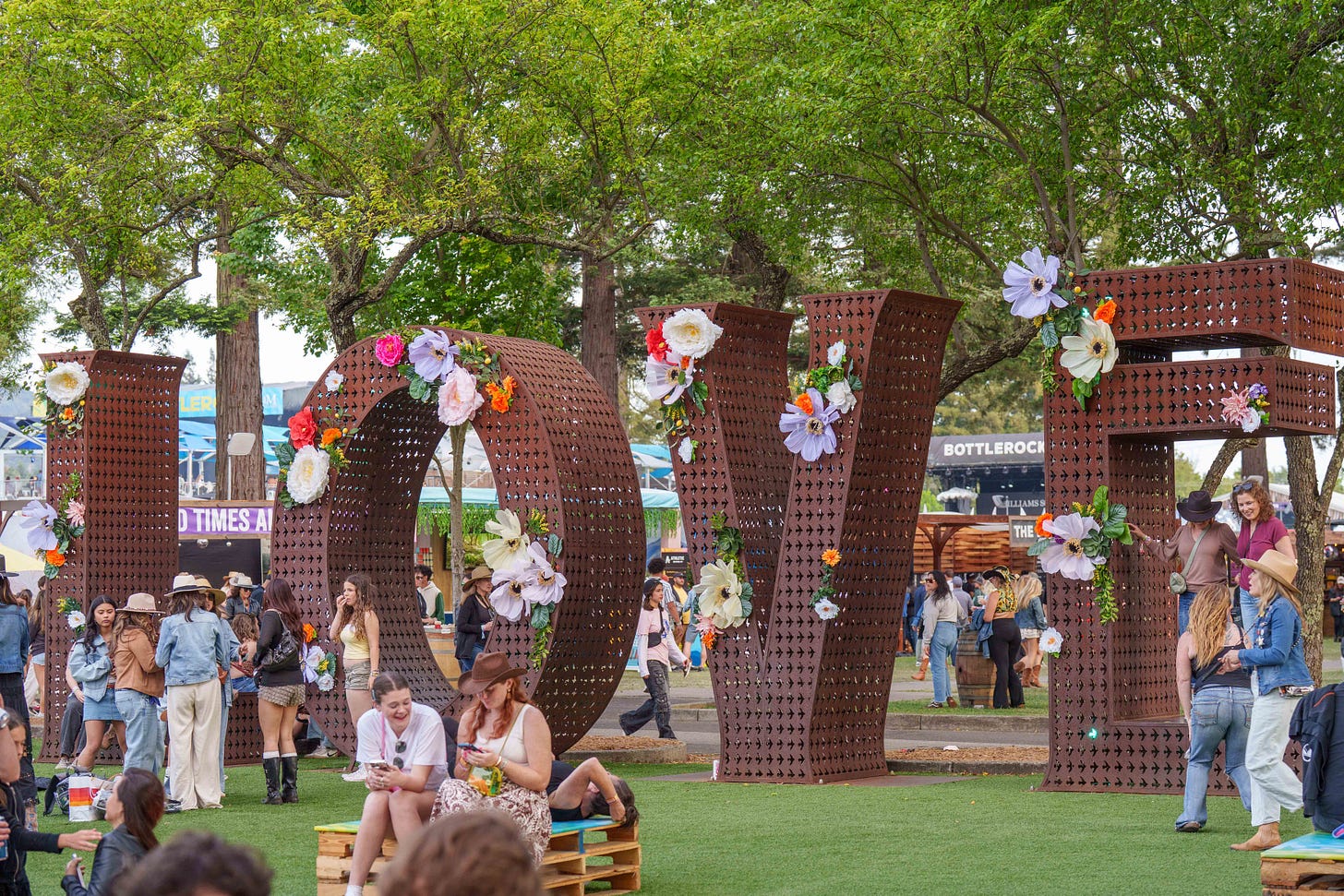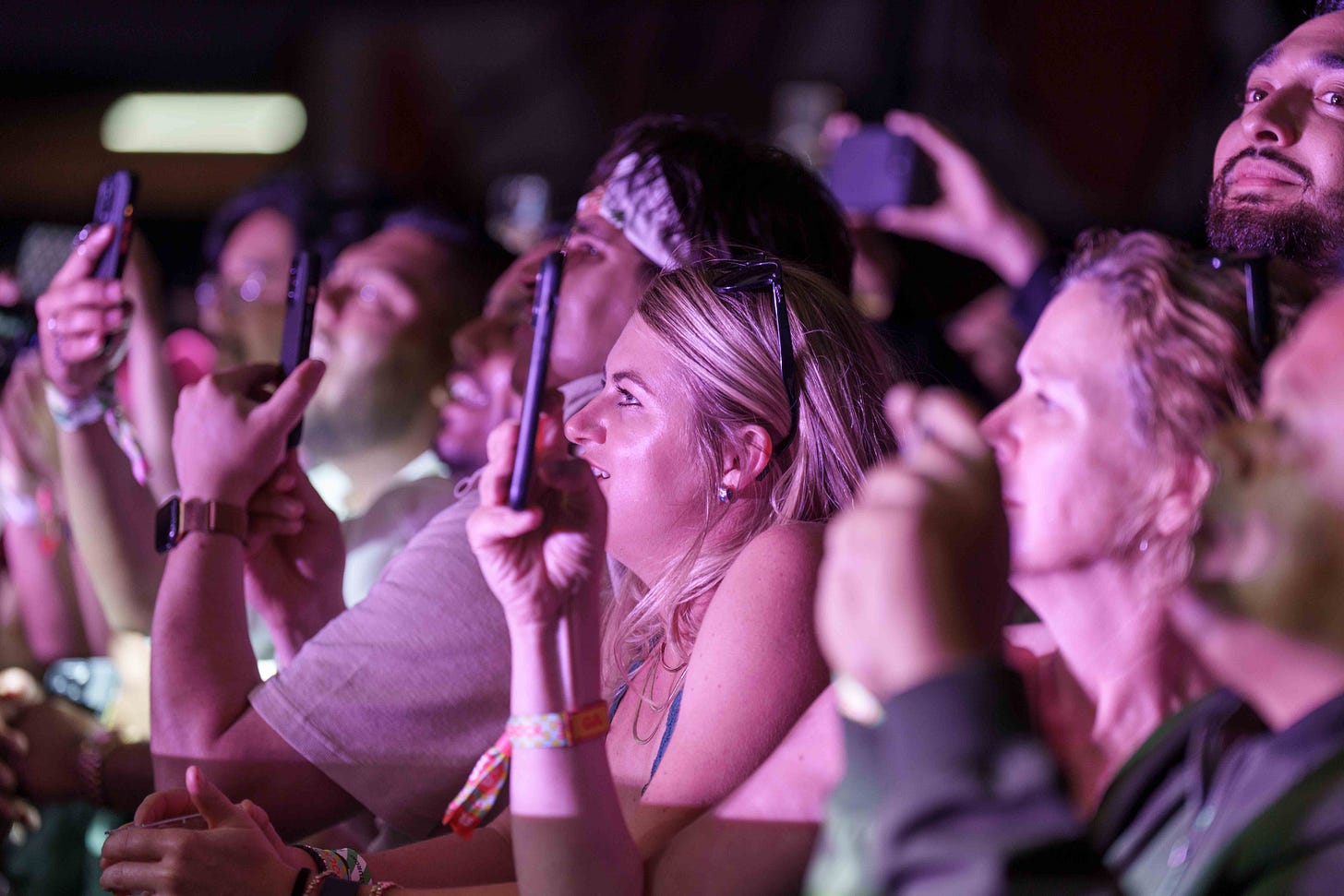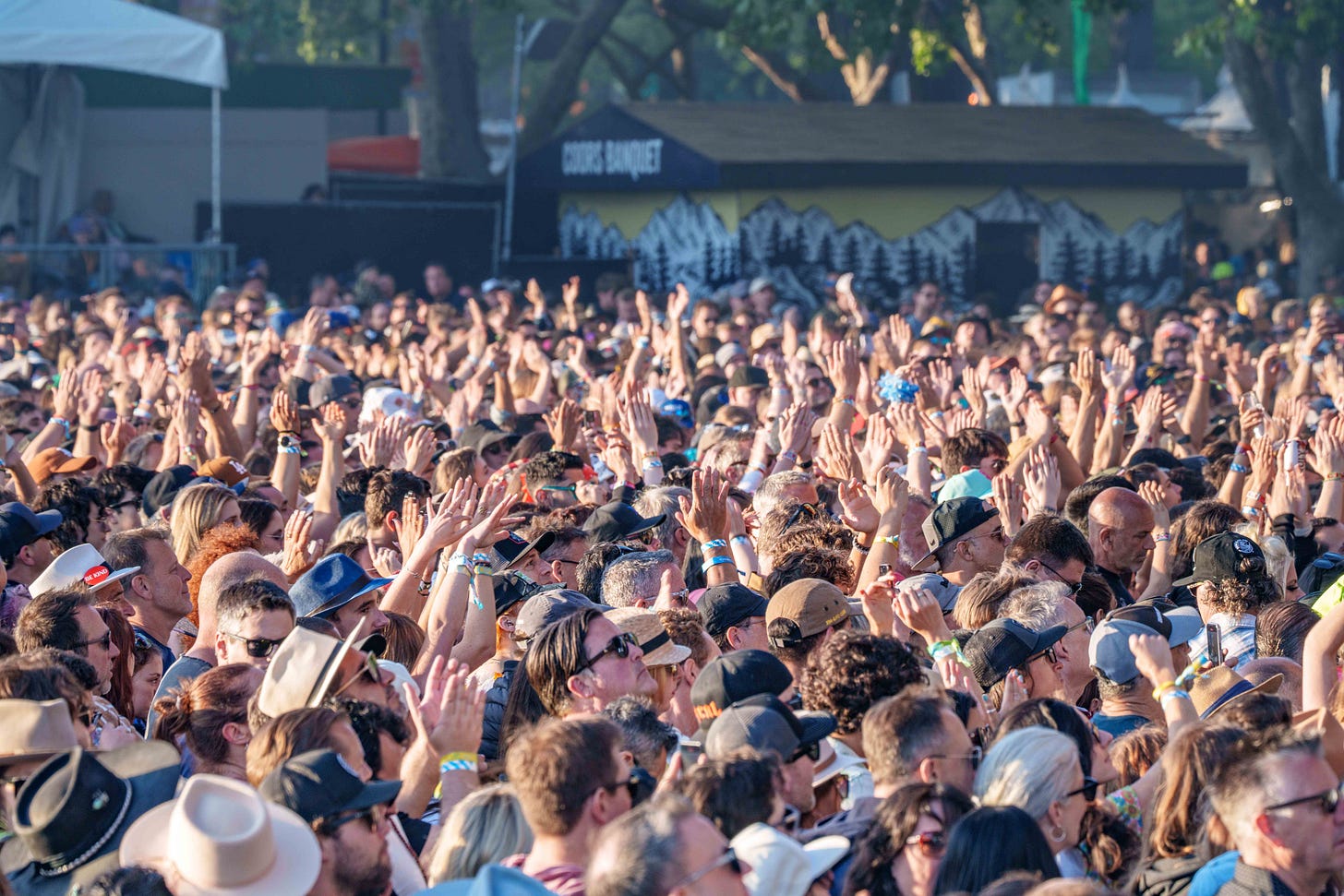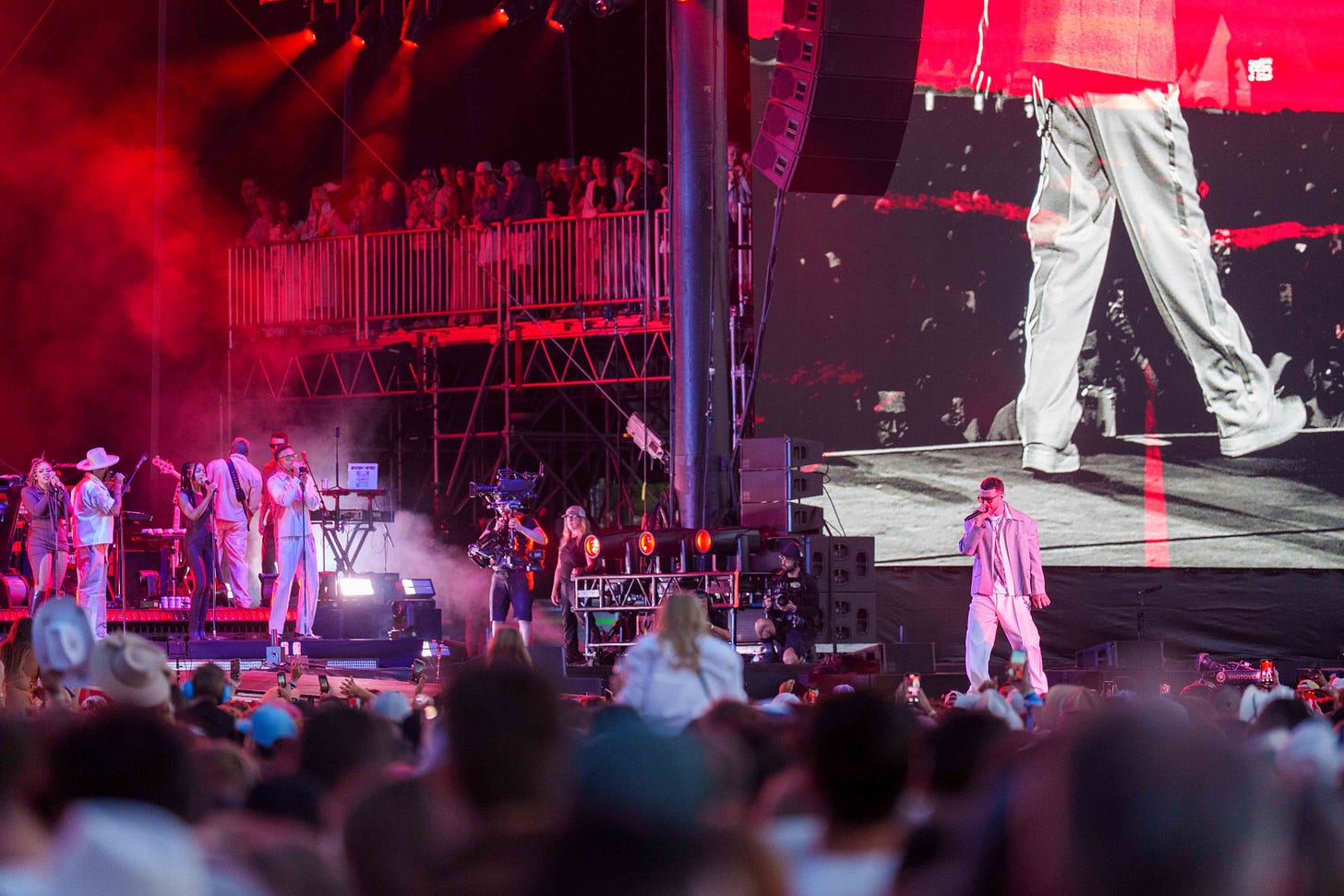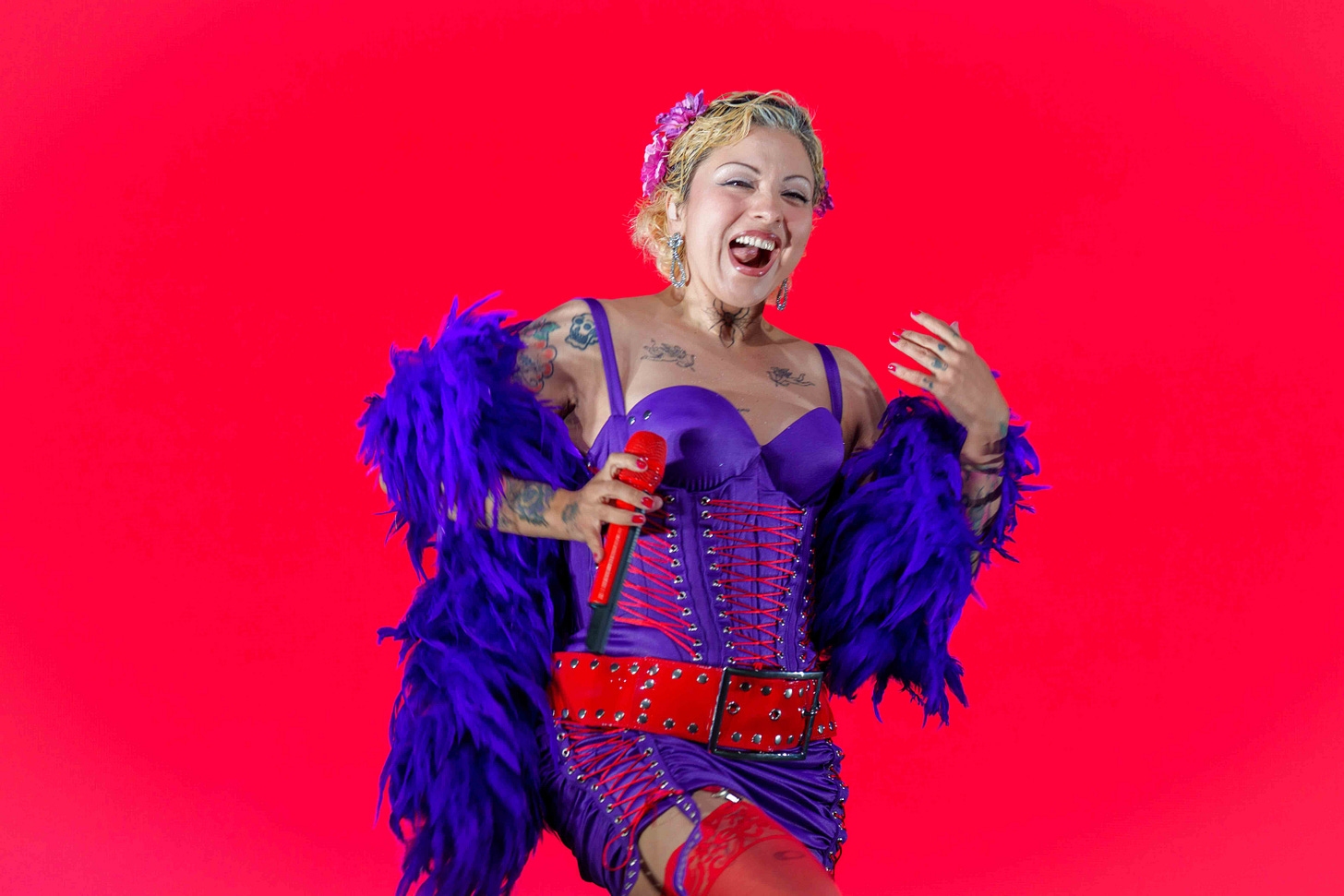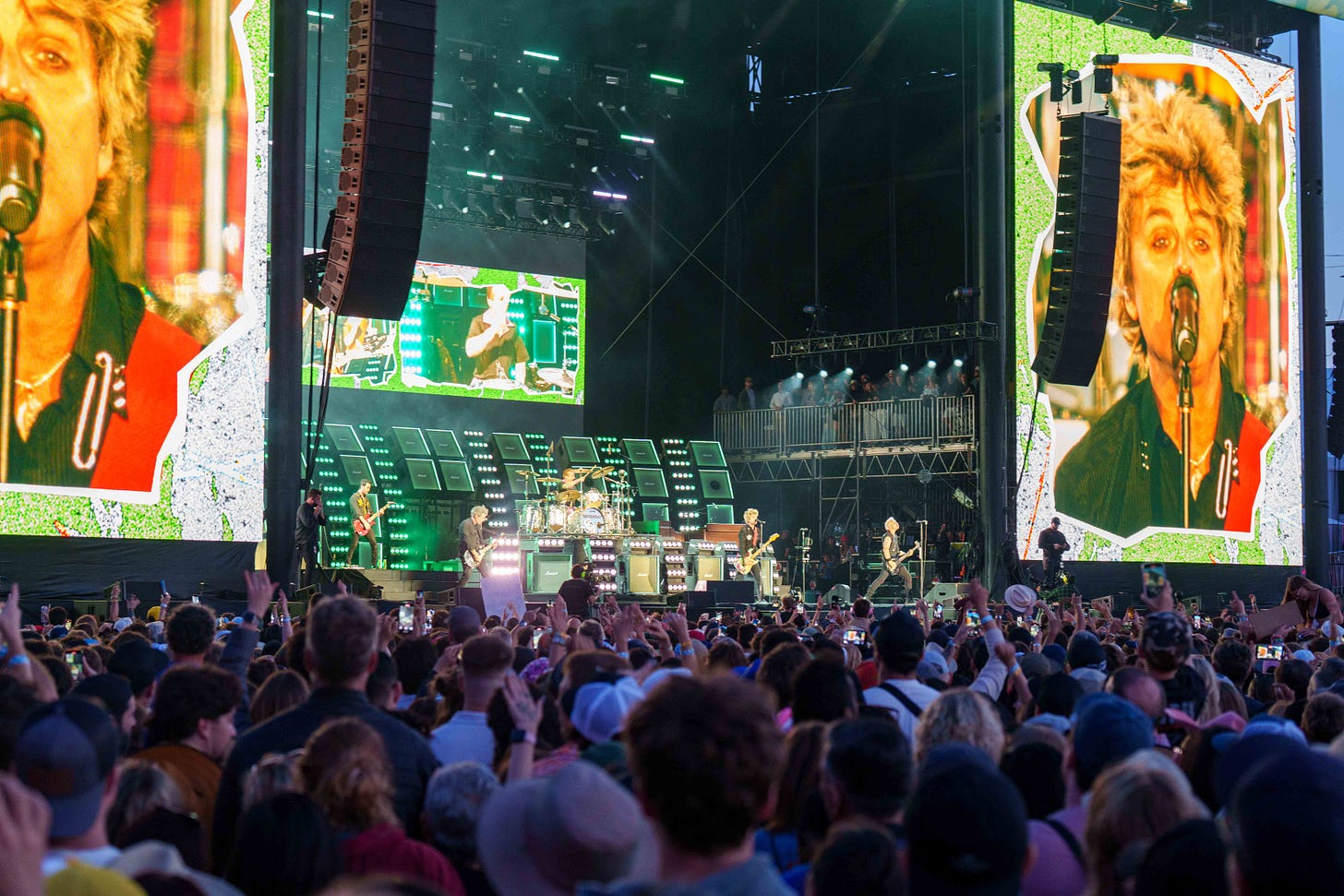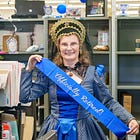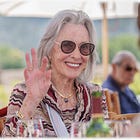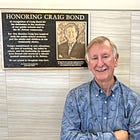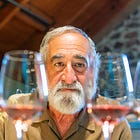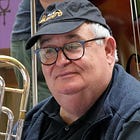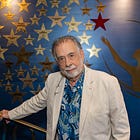NAPA VALLEY, Calif. — BottleRock Napa Valley returned over Memorial Day weekend with its now-familiar blend of music, food and celebrity moments — part high-production festival, part local disruption.
Now in its 12th year at the Napa Valley Expo, BottleRock 2025 drew thousands of attendees each day, attracting music fans from across the Bay Area and beyond. The headliners — Green Day, Justin Timberlake and Noah Kahan — offered name recognition and genre diversity. More than 80 acts filled out the schedule, performing across six stages.
A Growing Youth Presence
One noticeable shift this year was demographic. While the event typically draws an adult crowd — wine-lovers, foodies and Gen X music fans — Sunday’s audience skewed significantly younger. Tweens and teens, often flanked by parents but increasingly arriving in small clusters, filled the crowd in surprising numbers.
“It kind of felt like prom weekend without the gowns,” said one local vendor, who asked not to be named. “A lot of kids, younger than I’ve seen before, especially on Sunday — maybe for Noah? They were excited and having fun but definitely not here to sip chardonnay.”
The Music Itself
Green Day, performing Friday evening, was sharp and crowd-pleasing, mixing nostalgia with present-tense urgency. Flames shot up behind the band, and the audience shouted lyrics back at Billie Joe Armstrong with full-throated commitment. It was the biggest, most unified moment of the weekend.
Still, not everyone felt the lineup carried BottleRock’s usual spark.
“Sunday was disappointing,” said Carl Dene, owner of Sam’s General in Calistoga and St. Helena, who has attended the festival for the past eight years. “I didn’t feel the lineup fit the normal trademark of BottleRock. The Sunday lineup could’ve had a lot more energy. I like the past ones where you leave on a Sunday night wanting more and begging for next year.”
Dene recalled final-night sets from Foo Fighters, Red Hot Chili Peppers and Pink as benchmarks.
“Those were really good last-day headliners,” he said. “You left buzzing.”
He also expressed frustration over one artist’s unexplained absence.
“Still really confused and upset by the no-show of Flo Rida,” he said. “That was the one my whole group and family were really looking forward to.”
Playing at the same time as Green Day but on another stage, Ice Cube leaned on familiar West Coast classics. His energy was steady but subdued, and the pacing lagged at times.
“There was a lot of swearing, not a lot of spark, and the show didn’t seem to build,” said one fan.
Justin Timberlake, headlining Saturday night, delivered a polished, well-rehearsed set. Backed by the Tennessee Kids, Timberlake brought pop choreography and tight production values — but the crowd didn’t swell in the same way.
“He was great, but if you were far back, it was hard to follow the visuals,” said Lilia B. of Vallejo. “The screens just didn’t capture the dancing, but it was fun.”
Local vineyardist Richard Brockmeyer hadn’t planned to attend BottleRock this year. “My wife and I were originally going to see Robby Krieger at The Uptown — it sounded like a good splurge for my birthday,” he said. “The cushy seats and intimacy of The Uptown seemed more appealing than the busyness of BottleRock.” But after the show was canceled two weeks before the festival, he pivoted. “We decided to pay a few more bucks and experience the entire day.”
Brockmeyer, who saw The Doors in person the night after graduating from Bakersfield High School, said Krieger’s BottleRock set on Sunday “touched on all of their material” and included “kudos to fellow founding bandmate Ray Manzarek, who lived out his last years in Napa, near Silverado Country Club.”
More experimental acts also made an impression. Texas trio Khruangbin delivered a set of dreamy, instrumental psych-funk that felt more like a meditation than a concert. Visuals on the big screens were blurred intentionally, a decision some found artful, others frustrating.
“We couldn’t see them at all from the lawn,” said a man from Santa Rosa who asked not to be identified. “But the sound was different and felt completely new.”
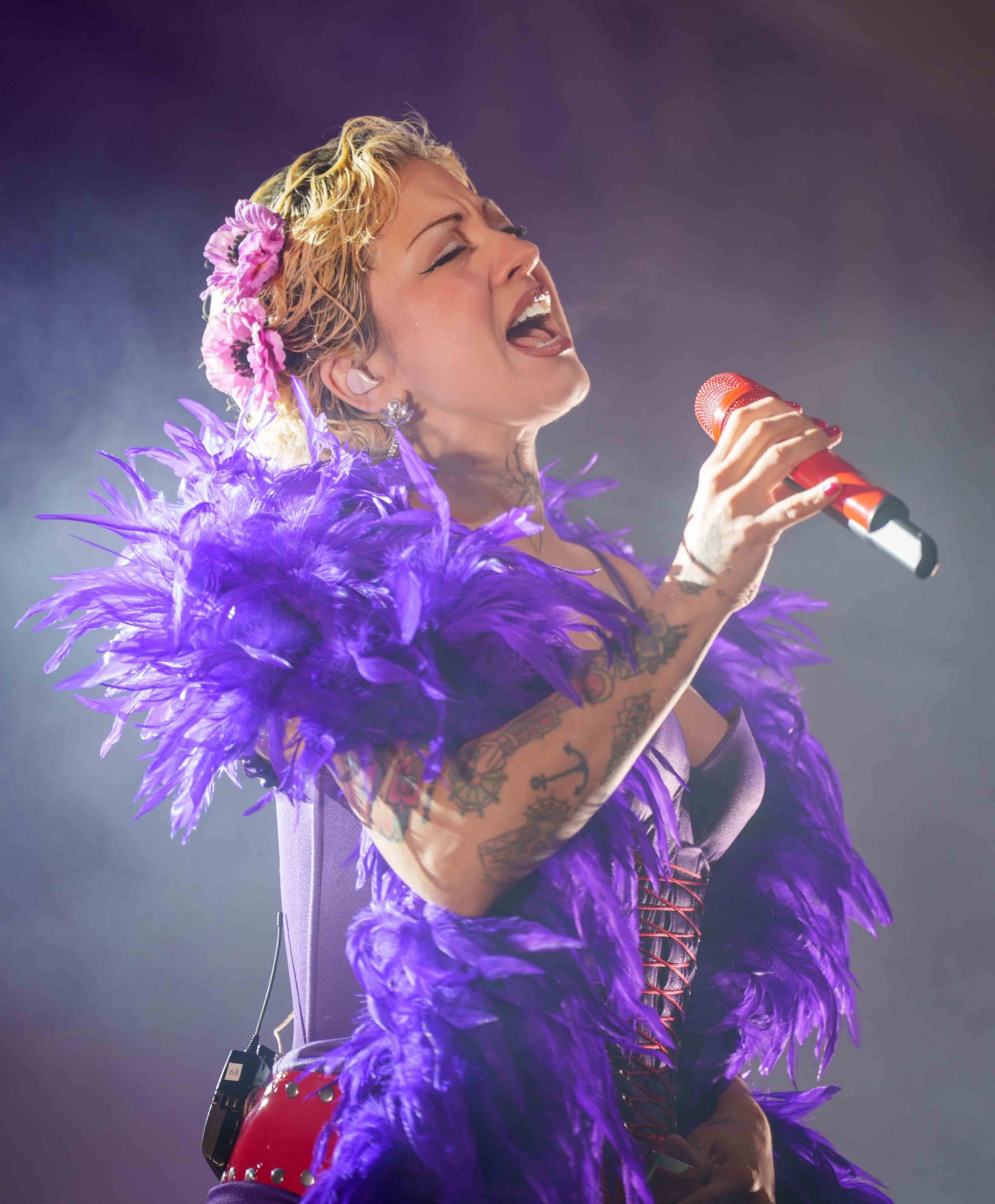
Chilean artist Mon Laferte, who was originally scheduled for Saturday, performed Sunday evening with dancers and dramatic lighting. Though her crowd was modest, the performance was among the weekend’s most theatrically ambitious. As I (Tim Carl) watched the spectacle, it was clear she deserved a bigger audience.
Mia Schaffel from San Francisco, who described herself as a fan of music and Butter Wines, which was being poured at the JaMPad, said one of the standout acts for her was classic Motown-throwback Jalen Ngonda who played the main stage as well as at the JaMPad, she said.
“His voice does not match what you’re seeing,” she said of his falsetto tone. “His voice is amazing.”
Schaffel especially enjoyed Ngonda’s performance and the rhythm of his song “If You Don’t Want My Love.”
Rock-pop singer Benson Boone impressed Schaffel with his music and “all the flips” he is known for executing during his performances, like the backflip off the piano he did at the Grammys.
Two up-and-coming young female guitarists played on opposite sides of the venue on Sunday. Bella Rayne and her hand-selected band of “Friends” made her BottleRock debut on the JaMPad stage shortly after Grace Bowers — who was joined by The Hodge Podge — rocked the larger JaM Cellars stage.
Rayne, who turned 18 the week of the festival, and the 17-year-old Bowers could be evolving the image of what a rock ‘n’ roll lead guitarist looks like. Both young women were the featured names of their acts looking every bit as polished as men twice their ages. Cameras focused more on Rayne and Bowers than the singers and other band members showcasing their six-string prowess.
For a couple songs, Bowers took to the microphone with a sound all her own, and softer than her guitar riffs. Her tone has a touch of singer Lauren Bjelde of the popular Bay Area band Royal Jelly Jive.
Joining Bowers onstage for her last song was soul and rhythm and blues artist Allen Stone performing a rendition of Steve Wonder’s “Superstition.” Stone, who told The New York Times in 2012 that he grew up on Wonder’s music, gave the song a touch of reggae.
Stone later took over the JaM Cellars stage for a full set by himself, performing fan favorites such as “Brown Eyed Lover” and “Voodoo.”
Behind the Beats: Culinary Stage and Local Food
The Williams Sonoma Culinary Stage again served up a festival within the festival. Bobby Flay and Ken Griffey Jr. charmed a crowd with steak, mezcal and good-natured rivalry. Actress Kate Hudson made two appearances — first performing her own music, then later joining her high school friend, Chef Brooke Williamson, onstage.

“She was surprisingly good,” said one audience member. “People were sort of skeptical, but she can really bring it.”
Beyond the celebrities, the festival’s food scene drew mixed reviews. Ohm Coffee Roasters, a locally owned musician-inspired coffee outfit, earned praise — and long lines.
"This was our seventh BottleRock and our busiest ever," said Derek Bromley, the founder. "It took a few tries (and fails) to get the formula right for craft coffee at a festival scale. Our truck just didn’t have the throughput to be able to keep up with the crowds, and we tried a couple of years with wholesale partners who were doing food as well as coffee from the same booth. We started over from scratch last year and essentially built a mini coffee shop in the middle of the festival. Crafting epic coffee in guerrilla/pop-up environments is how we built our business over the past nine-plus years, so it felt great to lean into that and swing for the fences."
Despite moments of peak demand, Bromley said most wait times were less than five minutes.
"It’s been a great partnership with the Latitude 38 team, and we’re gearing up to do it all again this weekend for La Onda."
Meanwhile, Burnt Ends, a barbecue vendor tucked along the main food court area, earned near-universal acclaim.
“Hands down the best thing I ate all weekend,” said Shelly Lainer, who said she was attending for his fourth year. “Tender, smoky, just excellent.”
“The spicy poke and Kahlua sliders from The Yard at Oxbow really hit the spot,” Brockmeyer said, naming his favorite bites of the weekend. “Browsing the menu boards of the local restaurants in the primary food court is good sport on its own — so many greatest hits.” He found the lobster roll “uninspired and pricey,” but noted that “even the street smells outside the festival were incredible,” pointing to “30-plus tiny hot dog carts” and backyard taquerias lining Juarez Street.
The much-hyped lobster corn dog, topped with caviar and previously a VIP-only offering, was made available to the general public this year. Responses were polarized. “It tasted weird and fishy,” said one attendee, who admitted to throwing it out. Others raved, calling it the standout festival bite. People seemed either obsessed or perplexed by the hype.
Crowds, Spending and a Mixed Economic Picture
Official numbers on spending and tax revenue won’t be available for months, but anecdotal reports suggest a mixed year economically. Several downtown Napa restaurant owners said that foot traffic felt lighter than usual.
“Friday and Sunday were soft,” said one shop owner, who preferred not to be named. “People went home early. Saturday was fine, but even that felt more reserved than previous years.”
The informal ticket resale market — legal or not — was active outside the gates. One scalper who has worked BottleRock since its second year said the spot market was “better than last year but still tough,” with prices hovering near face value for most of the weekend and some late-afternoon deals available Sunday.
“You can’t count on last-minute anymore,” he said. “People just aren’t spending the same way.”
“The economist in me thinks this wasn’t a great year for scalpers,” Brockmeyer said. “The event wasn’t sold out, and one-day tickets were still available at the box office. That should have capped the upper end price.”
Some venues opted to close altogether. Angele, a restaurant popular with locals along the Napa River Front, posted a sign saying it would be closed all weekend. “It’s just not worth it,” one employee said. “The parking is impossible, our regulars don’t want to deal with it and most of the festival folks aren’t looking for a long, quiet dinner.”
Parking, Logistics and the Local Equation
Parking remained one of the biggest friction points. Residents reported congestion well into surrounding neighborhoods, with private lots charging as much as $100 for a space. A handful of locals near the Expo took the opportunity to rent out driveways or lawns, but many just left town or hunkered down.
“There’s a balance to be struck between being a host community and being overrun,” said a downtown business owner. “I don’t think BottleRock crosses the line, but it walks right up to it.”
While the music and food bring visitors, the local economy doesn’t always feel the lift equally. Much of the revenue stays inside the fenced venue — VIP cabanas, sponsored wine bars, brand and immersive marketing setups known as brand activations. Some downtown bars and hotels do well, but others struggle to capture festival traffic.
“I think the city should be more transparent about the actual economic impact,” said a longtime resident. “We see the glamor and massive crowds, but we don’t always see the benefit.”
The End of the Beginning
Now a dozen years in, BottleRock has matured into one of Northern California’s major music events. It lacks the sheer sprawl of Coachella or Outside Lands but has carved out a space for itself by blending high-end Wine Country aesthetics with mainstream music appeal.
Still, it’s not universally embraced. And maybe that’s part of its identity.
“It’s a love-it-or-leave-it kind of weekend,” said one local. “But either way, you feel it.”
As the final chords faded Sunday night, crowds filtered into ride shares, wandered quietly back through town or searched for after-parties. With First Street closed to vehicle traffic, fleets of bike-cart taxis zipped through intersections, ferrying tired festivalgoers to far-flung parking zones and downtown destinations.
By Monday morning, parking had mostly returned to normal. The fairgrounds stood quiet again, awaiting this weekend’s La Onda Festival. The streets were largely clean, but the signs of wear were still there: sore legs, sunburned shoulders and a faint buzzing in the ears.
Over the course of the three-day weekend, I walked miles — parking as far as 2 miles away each day, not willing to pay for parking and then zigzagging from stage to stage within the venue. (Co-author Ernst was recovering from a foot injury and limited to a walking boot and crutches, making field reporting a more stationary endeavor.) That physical experience mirrored what many attendees said they felt: energized but exhausted and still sorting out how to think about the event — for fans, for businesses and for the community itself.
—
Tim Carl is a Napa Valley-based photojournalist.
Anne Ward Ernst is a journalist who enjoys covering the Napa Valley and the music scene.


